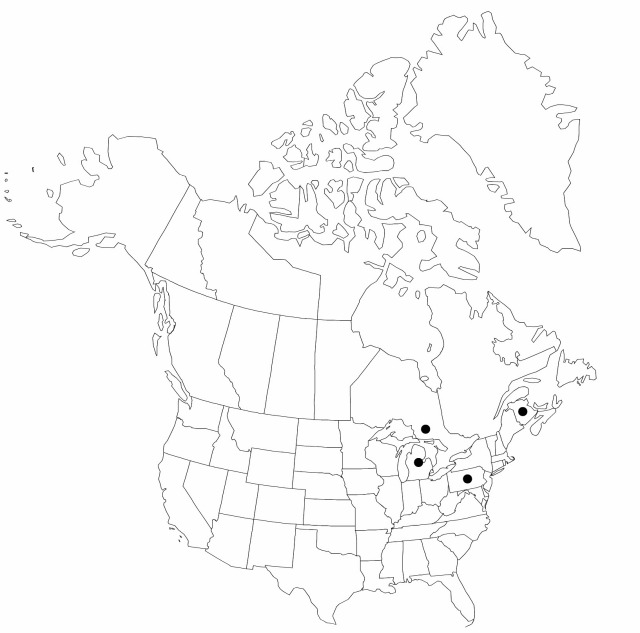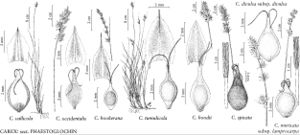Difference between revisions of "Carex muricata subsp. lamprocarpa"
Anal. Kvét. Ceská, 88. 1879.
imported>Volume Importer |
imported>Volume Importer |
||
| Line 60: | Line 60: | ||
|publication year=1879 | |publication year=1879 | ||
|special status=Introduced;Illustrated | |special status=Introduced;Illustrated | ||
| − | |source xml=https:// | + | |source xml=https://bitbucket.org/aafc-mbb/fna-data-curation/src/2e0870ddd59836b60bcf96646a41e87ea5a5943a/coarse_grained_fna_xml/V23/V23_502.xml |
|genus=Carex | |genus=Carex | ||
|section=Carex sect. Phaestoglochin | |section=Carex sect. Phaestoglochin | ||
Latest revision as of 20:41, 5 November 2020
Plants without conspicuous rhizomes. Culms 10–85 cm, 1.5–2.5 mm wide basally, 0.6–0.8 mm wide distally. Leaves: sheaths tight, green, fronts hyaline, with some cross veins; ligules to 3.5 mm, usually wider than long; widest leaf blades 2–4mm wide. Inflorescences with 4–7 spikes, 1–2.5(–3) cm × 7–10 mm; proximal internodes 5–10 mm, as long as proximal spikes; proximal bracts to 2.5 cm; spikes with 5–10 spreading or ascending perigynia. Pistillate scales brown with green, 3-veined center, ovate, 2.1–4.5 × 1.5–2.2 mm, body as long as perigynium, apex acute or short-awned. Anthers 1–3 mm. Perigynia pale green becoming dark brown and glossy, veinless or to 7-veined abaxially, 3–4(–4.5) × 1.8–2.5 mm, margins serrulate distally; beak 0.5–1.5 mm, apical teeth 0.2–0.5 mm. Achenes circular to elliptic-circular, 1.9–2.4 × 1.5–2 mm.
Phenology: Fruiting late spring–early summer.
Habitat: Fields, pastures, lawns, scrub
Elevation: 10–200 m
Distribution

Introduced; N.B., Ont., Mich., Pa., Europe, w Asia.
Discussion
See comments under 33. Carex divulsa.
The name Carex muricata has sometimes been misapplied to C. echinata (sect. Stellulatae).
Selected References
None.
